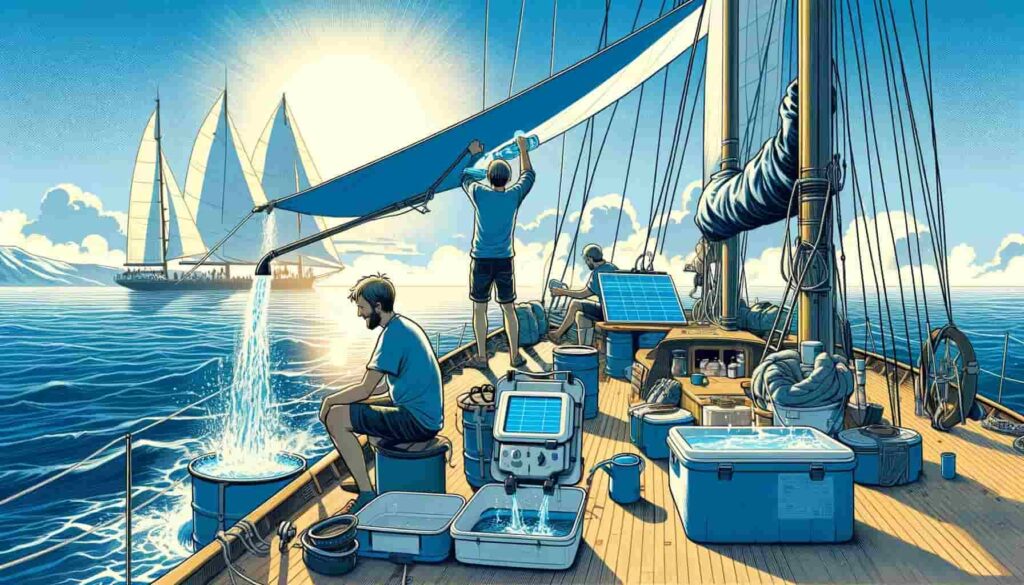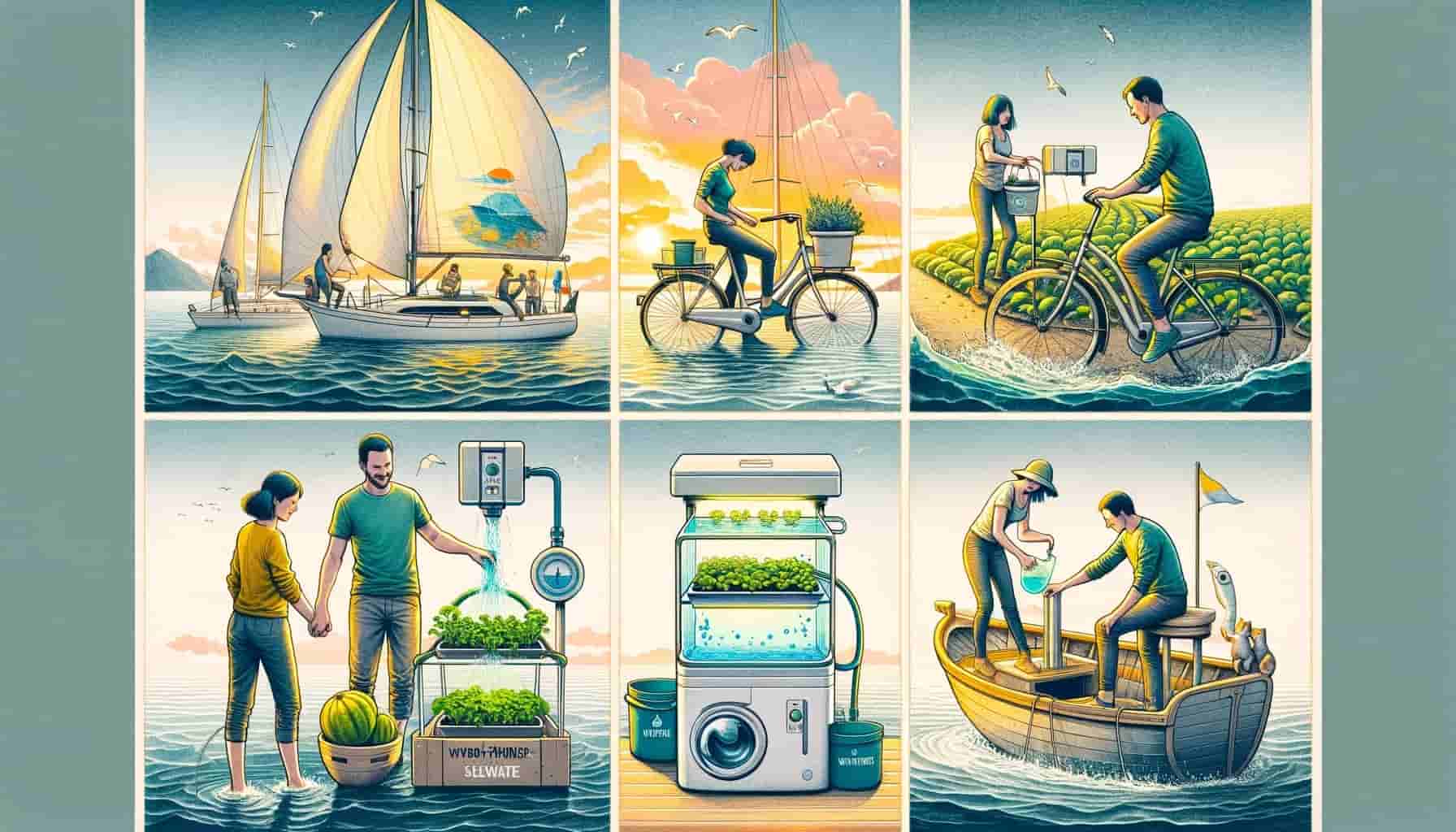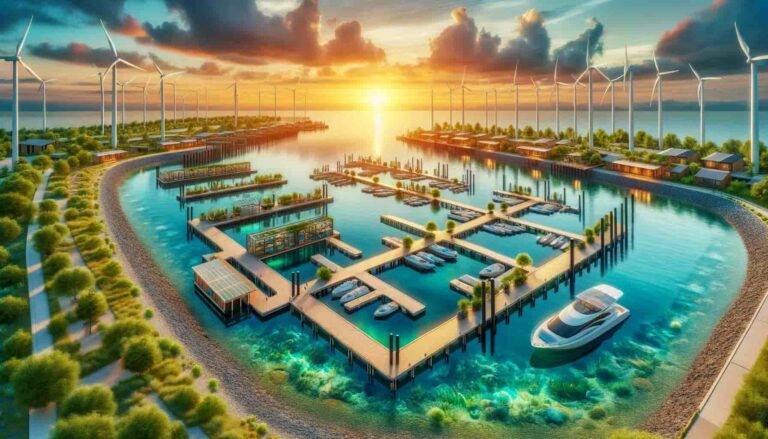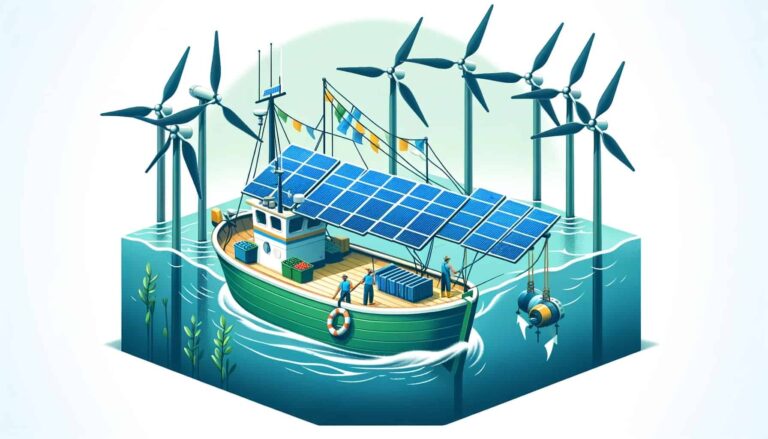Water Conservation Tips for Long Sailing Trips
Water conservation on long sailing trips is crucial. Here are some essential tips for conserving water during your journey at sea.
Water conservation is a vital aspect of long sailing trips, as access to freshwater can be limited. Knowing how to conserve water is important to ensure a sufficient supply onboard and minimize environmental impact. This article will outline effective strategies and tips for conserving water during your sailing adventure.
By implementing these measures, you can enjoy your trip without compromising your water supply or harming the environment. So, let’s dive into these conservation tips that will make your journey sustainable and efficient.
Understanding The Importance Of Water Conservation
Water conservation is crucial on long sailing trips. Explore effective tips to conserve water and contribute to a sustainable voyage.
The Significance Of Water Conservation While Sailing
Water conservation is of utmost importance during long sailing trips. As an essential resource for survival, water plays a vital role in maintaining the health and well-being of sailors. Understanding the significance of water conservation is crucial to ensure a successful and sustainable journey.
By conserving water, sailors can better manage their limited supply and reduce the environmental impact of their voyage.
How Limited Water Supply Can Impact Long Sailing Trips
During long sailing trips, the availability of freshwater is limited, which can have several implications on the overall journey. Let’s explore how this situation can impact sailors:
- Daily Hygiene: With a limited water supply, sailors must practice efficient hygiene routines to ensure cleanliness while conserving water. Simple actions like taking shorter showers or using wet wipes can significantly help in reducing water consumption without compromising personal hygiene.
- Cooking and Cleaning: Water is essential for cooking meals and maintaining a clean living space on board. By adopting water-saving techniques such as using minimal water when washing dishes or opting for one-pot cooking methods, sailors can optimize their water usage and extend the lifespan of their freshwater reserves.
- Drinking Water Supply: Meeting the drinking water requirements of the crew is crucial for their health and well-being. When the supply is limited, sailors should consider rationing their water intake and exploring alternative sources, such as onboard desalination systems or portable water filters.
- Maintenance and Repairs: Sailing vessels require regular maintenance and repairs, which often involve the use of water. By being mindful of water consumption during such activities, sailors can ensure that an adequate supply of fresh water is available for essential needs rather than being wasted on non-essential tasks.
- Environmental Impact: Conserving water during a sailing trip not only benefits the sailors directly but also helps to minimize the environmental impact. By reducing water consumption, sailors can contribute to the preservation of natural resources and marine ecosystems.
Understanding the importance of water conservation while sailing is crucial for a smooth and sustainable journey. Through efficient water management practices, sailors can make the most of their limited supply and keep the voyage enjoyable and environmentally conscious. So, let’s sail responsibly and strive for a greener and more water-conscious future on the open seas!

Planning And Preparing For Efficient Water Usage
Planning and preparing for efficient water usage is crucial for long sailing trips. With these water conservation tips, you can make the most out of your limited water supply, ensuring a sustainable journey without compromising your needs.
Long sailing trips require careful planning and preparation to ensure efficient water usage on board. From assessing water requirements to choosing the right storage equipment and packing water-saving devices, every step plays a crucial role in conserving this precious resource.
Let’s delve into each aspect to make your sailing adventure both sustainable and enjoyable.
Assessing Water Requirements For Long Sailing Trips:
To begin your water conservation journey, it’s essential to accurately assess your water requirements. Consider these factors:
- Crew size and duration: Determine the number of people on board and the duration of your trip. This will help estimate the amount of water needed.
- Daily water usage per person: On average, a person requires around 3-5 liters of water per day for drinking, cooking, hygiene, and other basic needs.
- Additional activities and factors: Take into account any special activities or factors that may increase water usage, such as fishing, laundry, or navigating in warmer climates.
- Contingency planning: Factor in extra water for emergencies and unexpected delays, ensuring you have an adequate supply to last the duration of your trip.
Choosing The Right Water Storage Equipment And System For Sailboats:
Optimizing your boat’s water storage system is vital for efficient usage. Consider these tips:
- Inspect and upgrade your tanks: Ensure your water tanks are in good condition and free from leaks. If necessary, repair or replace them before setting sail.
- Invest in efficient storage equipment: Consider installing water-saving devices such as water meters, low-flow faucets, and showerheads to minimize consumption without compromising comfort.
- Water filtration and treatment: Install a reliable water filtration and treatment system to make use of alternative water sources, such as rainwater or seawater, after proper treatment.
- Monitor water levels: Regularly check the water levels in your tanks to track consumption and avoid unnecessary wastage. This will also give you a clear idea of when to replenish your supply.
Packing Water-Saving Devices And Accessories:
To maximize water conservation during your sailing trip, pack these handy devices and accessories:
- Collapsible water containers: Carry collapsible water containers for additional storage capacity when needed. These containers are lightweight and easy to stow away when not in use.
- Water-efficient dishware and utensils: Pack low-flow or spray nozzles for faucets, as well as compact and efficient dishware that requires less water for washing.
- Reusable water bottles: Bring reusable water bottles for each crew member, reducing reliance on disposable plastic bottles and minimizing waste.
- Nautical showers: Nautical showers are portable devices that conserve water by delivering a focused stream for efficient bathing while using less water.
- Greywater catchment system: Utilize a greywater catchment system to collect and reuse water from showers, dishwashing, and laundry for secondary purposes like cleaning the deck or flushing toilets.
By following these water conservation tips and incorporating them into your sailing adventure, you can minimize water consumption without sacrificing comfort. Remember, conscious decision-making and efficient resource management contribute to both a sustainable environment and a memorable trip at sea.
Implementing Effective Water Conservation Strategies
Discover practical water conservation tips for long sailing trips to ensure an effective and sustainable approach to water usage. Learn how to optimize water consumption, reduce waste, and contribute to the preservation of our precious marine ecosystems.
Managing Personal Hygiene On Long Sailing Trips With Limited Water:
- Use biodegradable and waterless products for personal hygiene, such as dry shampoo, body wipes, and hand sanitizers.
- Opt for quick showers and utilize water-saving showerheads to conserve water.
- Consider using saltwater for rinsing off after swimming or diving into the ocean directly.
- Limit laundry by reusing clothes multiple times and using eco-friendly detergents when washing is necessary.
- Use seawater for rinsing dishes and utensils after meals.
Practical Tips For Minimizing Water Usage During Cooking And Dishwashing:
- Plan meals ahead to avoid excessive food waste, which in turn saves water used for cleaning.
- Wash dishes and cookware immediately after use to prevent food from drying and require extra water for scrubbing.
- Use a basin to wash dishes instead of running water continuously, and scrape off leftover food instead of rinsing first.
- Utilize water-efficient appliances, such as pressure cookers and slow cookers, to minimize water use during cooking.
- Cook with minimal water by steaming or using one pot for multiple ingredients.
Reducing Water Consumption During Boat Maintenance And Cleaning:
- Regularly inspect the boat for any leaks or plumbing issues to prevent water wastage.
- Utilize environmentally friendly cleaning products that require less water for rinsing.
- Prioritize cleaning surfaces exposed to sea spray and salt water to reduce the need for excessive rinsing.
- Use brushes with built-in water-saving features, such as flow control valves, during boat cleaning.
- Collect rainwater for basic boat cleaning tasks, such as rinsing off saltwater and washing decks.
Water conservation is crucial during long sailing trips to ensure a sustainable and enjoyable experience. By implementing effective strategies for managing personal hygiene, minimizing water usage during cooking and dishwashing, and reducing water consumption during boat maintenance and cleaning, sailors can make a significant positive impact on the environment while enjoying their adventure on the open waters.
Obtaining And Utilizing Alternative Water Sources
Discover effective water conservation tips for long sailing trips, including obtaining and utilizing alternative water sources. Save water while enjoying your journey by implementing these practical strategies.
Exploring Options For Collecting And Purifying Rainwater
Rainwater can be a valuable source of freshwater during long sailing trips. Here are some ways to collect and purify rainwater:
- Set up a rainwater collection system on your boat, using rain barrels or tanks to capture and store rainfall.
- Install a rainwater diverter or filter to remove debris and contaminants from collected rainwater.
- Treat rainwater by using water purifying tablets or drops, which are readily available and easy to use.
- Boil the rainwater to kill any potential bacteria or pathogens before consumption.
- Remember to check your local regulations regarding the collection and use of rainwater, as there may be specific guidelines to follow.
Utilizing Onboard Desalination Systems For Converting Seawater Into Freshwater
When sailing in oceans or saltwater environments, desalination systems can be an excellent option for obtaining fresh water. Here’s how to utilize them effectively:
- Invest in a reliable onboard desalination system that can convert seawater into potable freshwater.
- These systems use a process called reverse osmosis to remove salt and impurities from seawater, producing clean drinking water.
- Regularly check and maintain the desalination system to ensure optimal performance and prevent any malfunctions.
- Store the produced freshwater in suitable containers or tanks, ensuring they are clean and free from any contaminants.
- It’s essential to be aware of any power requirements or limitations of your desalination system to avoid any unexpected issues while sailing.
Using Water Filters Or Purifiers To Ensure Drinking Water Safety
Water filters and purifiers are crucial tools for ensuring the safety and quality of drinking water during long sailing trips. Here are some tips to make the most of them:
- Invest in a high-quality water filter or purifier suitable for your specific needs. There are various options available, such as activated carbon filters or UV light purifiers.
- Follow the instructions provided by the manufacturer for using and maintaining the filter or purifier correctly.
- Regularly clean and replace filter cartridges to maintain their effectiveness in removing contaminants.
- Store filtered water in clean containers or bottles, ensuring they are properly sealed to prevent contamination.
- It’s important to note that while water filters or purifiers can improve water quality, they may not remove all contaminants, so it’s wise to complement their use with other water treatment methods if necessary.
Waste Water Management And Recycling
Water conservation tips for long sailing trips include effective wastewater management and recycling. By implementing these practices, sailors can significantly reduce their water usage, ensuring a sustainable and eco-friendly journey.
Proper Disposal Of Graywater And Blackwater On Sailboats
Proper wastewater management on sailboats is essential to minimize the environmental impact of long sailing trips. Disposing of greywater and blackwater responsibly not only helps preserve the marine ecosystem but also ensures a more pleasurable sailing experience. Consider the following guidelines:
- Graywater, which includes water from sinks, showers, and laundry, should be disposed of at least 3 nautical miles from the nearest land. Ideally, use biodegradable soaps and detergents to reduce harmful effects on aquatic life.
- Blackwater, containing human waste, requires special treatment. Use marine-grade holding tanks with efficient treatment systems to safely store and process blackwater. Pump it out at designated facilities or when safely offshore to avoid contaminating coastal waters.
Implementing Recycling Systems For Water Reuse On Board
Water scarcity is a common challenge during long sailing trips. Implementing effective recycling systems on board can help conserve this precious resource. Consider the following options:
- Install a water maker or desalination system to convert seawater into freshwater. Ensure the system is properly maintained and use it sparingly to prevent excessive energy consumption.
- Collect and filter rainwater for non-potable purposes such as deck washdown or cleaning. Use appropriate filters to remove impurities before reuse.
- Invest in water-efficient appliances and fixtures, such as low-flow showerheads and faucets, to minimize water consumption on board.
Maximizing The Use Of Treated Water For Non-Potable Purposes
Water treatment processes can provide an additional source of non-potable water for various purposes while promoting water conservation. Consider the following strategies:
- Treat graywater to remove contaminants and convert it into non-potable water. Use this treated water for activities like deck cleaning, rinsing diving gear, or watering plants on board.
- Install separate plumbing systems to ensure treated water is clearly distinguished from potable water. Labeling and color-coding these systems help prevent accidental cross-contamination.
- Regularly maintain and monitor the treatment systems to ensure their effectiveness. Consider using eco-friendly treatment methods, such as ultraviolet disinfection or ozone treatment, to minimize chemical usage.
By following proper wastewater management practices, implementing recycling systems, and maximizing the use of treated water for non-potable purposes, sailors can contribute to the preservation of our oceans and enjoy responsible sailing trips for years to come. Remember, every drop of water saved counts towards a sustainable future on the open seas.
Educating And Promoting Water Conservation Practices
Discover essential water conservation tips for long sailing trips and learn how to educate and promote responsible practices for preserving this precious resource. From efficient water usage to smart equipment choices, these strategies will ensure sustainability while exploring the open sea.
Encouraging Crew Members To Adopt Water-Saving Habits And Routines
- Encourage shorter showers: Limit showering time by using timers or reminders to ensure that water is not wasted unnecessarily.
- Promote navy showers: Teach crew members the concept of a navy shower, where water is turned on only to wet the body, then turned off while lathering, and finally turned on again for rinsing. This technique saves a significant amount of water.
- Install low-flow fixtures: Replace conventional faucets with low-flow alternatives that reduce the water flow rate without compromising functionality.
- Raise awareness about dishwashing: Emphasize the importance of conserving water while washing dishes by using basins to capture and reuse rinse water, and scraping plates before washing to minimize water usage.
- Encourage dishwashing rotation: Develop a schedule encouraging crew members to take turns washing dishes, ensuring that the dishwashing duty is evenly distributed, and creating opportunities for everyone to understand the value of water conservation.
Spreading Awareness About The Importance Of Water Conservation In Sailing Communities
- Create educational materials: Develop brochures, posters, or infographics that explain the significance of water conservation in sailing and distribute them to sailing communities.
- Organize seminars and workshops: Conduct informative sessions in sailing clubs or marinas to educate sailors about the importance of conserving water and provide them with practical tips and techniques.
- Publish articles and blog posts: Write engaging articles or blog posts for sailing magazines, websites, or social media platforms, highlighting the role of water conservation in preserving marine ecosystems and promoting sustainable sailing.
- Collaborate with sailing influencers: Partner with influential sailors and yachting enthusiasts who can share water conservation messages through their social media channels, reaching a larger audience and inspiring more individuals to practice sustainable water usage.
- Engage in online discussions: Participate in online forums, groups, and communities dedicated to sailing, sharing insights and knowledge about water conservation practices, and encouraging others to join the conversation.
Collaborating With Organizations And Initiatives Dedicated To Sustainable Sailing Practices
- Support sustainable sailing initiatives: Identify and collaborate with organizations that are actively working towards sustainable sailing practices, such as sail training programs that prioritize water conservation. Offer your expertise and resources to contribute to their initiatives.
- Share resources and knowledge: Facilitate knowledge exchange and partnership opportunities with like-minded organizations to collectively address water conservation challenges in sailing. Share best practices, research findings, and innovative solutions to enhance collective efforts.
- Participate in research and development: Contribute to research projects focused on sustainable sailing practices, including water conservation technologies and strategies. Support organizations that investigate and develop new methods to optimize water usage in a sailing environment.
- Promote eco-friendly products: Partner with manufacturers that produce eco-friendly sailing products, including water-saving devices, filtration systems, and reusable water containers. Encourage sailors to adopt these products and help establish a market demand for sustainable options.
- Advocate for policy changes: Engage in discussions with relevant authorities, regulatory bodies, and policymakers to advocate for policies that promote water conservation in sailing. Collaborate with sailing communities to raise awareness and drive change at a broader level.
Summary And Conclusion
Discover effective water conservation tips for long sailing trips to minimize your environmental impact. These practical strategies will help you conserve water, making your journey more sustainable and enjoyable.
Recap Of Water Conservation Tips For Long Sailing Trips:
- Plan ahead: Make a detailed water usage plan before embarking on your sailing adventure.
- Monitor and limit water usage: Keep track of your water consumption and be mindful of how much you use.
- Use water-saving fixtures: Install low-flow faucets, showerheads, and toilets to minimize water wastage.
- Opt for quick showers: Limit your showers to short durations to conserve water.
- Reuse water whenever possible: Collect and reuse water for activities like cleaning and rinsing dishes.
- Fix leaks promptly: Regularly check for leaks and repair them immediately to avoid water loss.
- Use saltwater for non-drinking purposes: Whenever feasible, utilize saltwater for tasks like deck cleaning or cooling the engine.
- Use eco-friendly cleaning products: Choose environmentally friendly cleaning agents to avoid harmful chemical runoff into the ocean.
- Collect rainwater: Utilize rainwater by setting up a system to capture and store it for various onboard uses.
- Educate your crew: Ensure that everyone on board is aware of the importance of water conservation and encourage responsible usage.
Remember, responsible water usage plays a crucial role in preserving our oceans and natural resources. By implementing these water conservation tips during your long sailing trips, you can contribute to the sustainability of our planet’s precious water sources. Happy sailing!
Frequently Asked Questions For Water Conservation Tips For Long Sailing Trips
What Are The 5 Methods Of Water Conservation?
The 5 methods of water conservation include: using low-flow fixtures, fixing leaks, collecting rainwater, watering plants efficiently, and reducing water waste.
How Do I Prepare For A Long Sailing Trip?
To prepare for a long sailing trip, follow these steps: 1. Review safety procedures, including navigation, weather forecasting, and emergency protocols. 2. Stock up on essential supplies such as food, water, safety equipment, and spare parts. 3. Conduct thorough maintenance checks on the boat, ensuring everything is in working order.
4. Prepare a detailed itinerary, accounting for potential ports of call and safety plans along the way.
Can You Leave A Sailboat In The Water Year Round?
Yes, you can keep a sailboat in the water all year round without any issues.
How Do You Get Fresh Water On A Sailboat?
To get fresh water on a sailboat, use a desalination system or carry portable water containers.
Conclusion
Water conservation is crucial during long sailing trips to maintain a sustainable and enjoyable experience. By following these simple tips, you can minimize your water consumption and make the most out of your journey. Be mindful of your water sources, utilize efficient water-saving appliances, and practice responsible habits such as reusing towels and minimizing dishwashing.
Additionally, planning your meals and provision properly can help reduce food wastage, which indirectly saves water as well. Remember to fix any leaks promptly and educate your crew members about the importance of water conservation. By implementing these practices, not only will you help preserve the precious water resources of our planet, but you will also ensure a comfortable and eco-friendly sailing trip.
So, go ahead and embrace these water conservation tips to enjoy a responsible sailing adventure while taking care of the environment. Safe travels!








